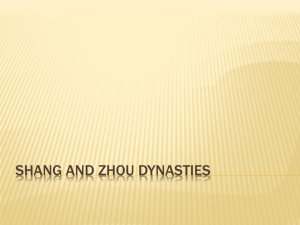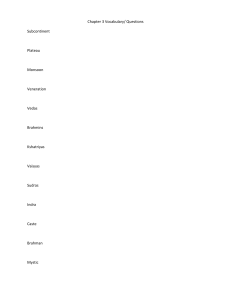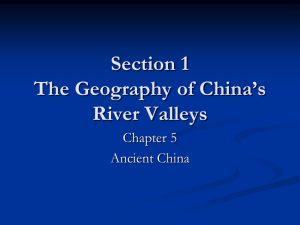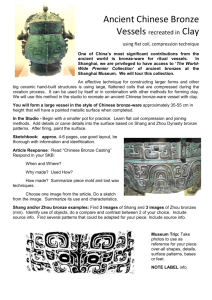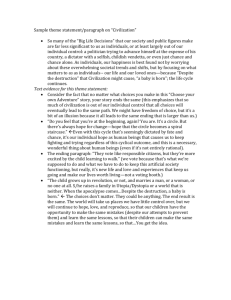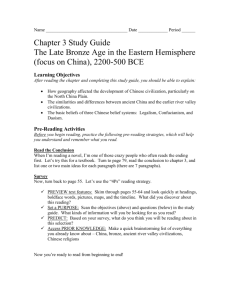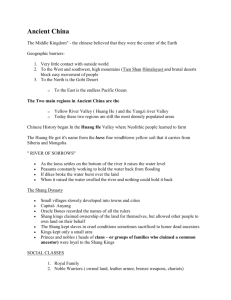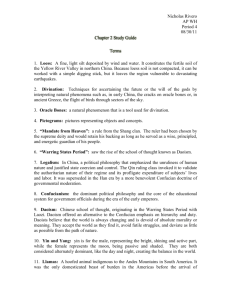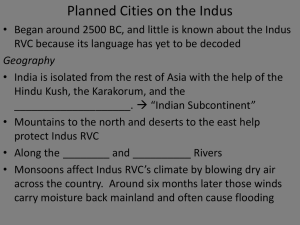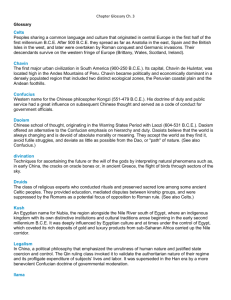The Yellow River Valley Civilization
advertisement
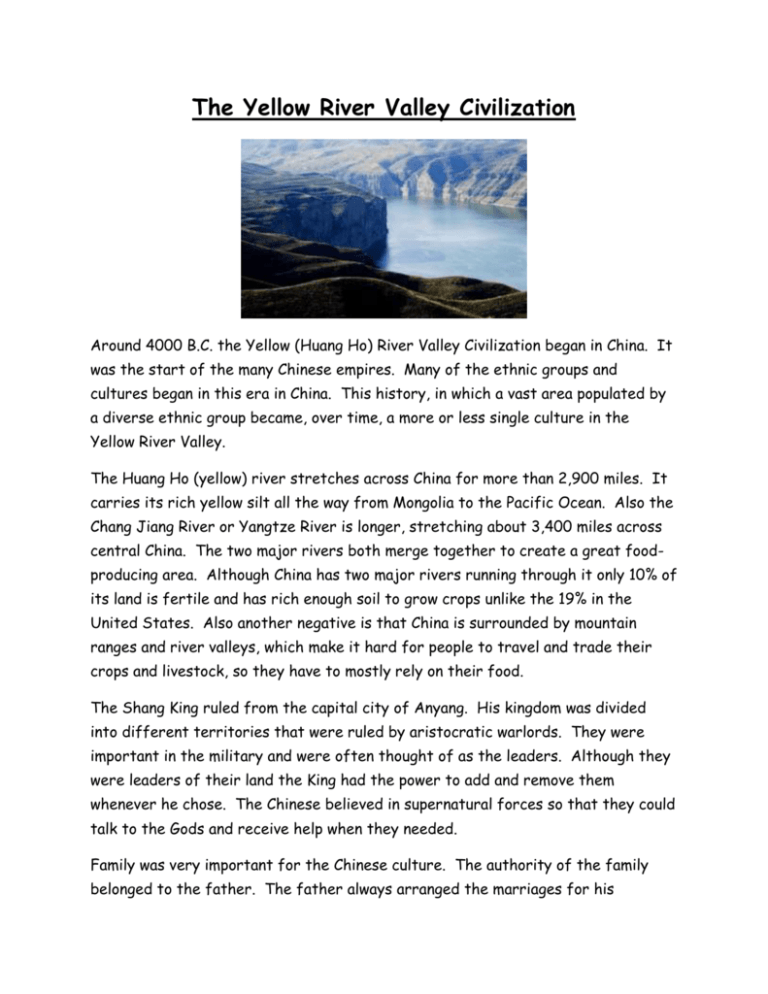
The Yellow River Valley Civilization Around 4000 B.C. the Yellow (Huang Ho) River Valley Civilization began in China. It was the start of the many Chinese empires. Many of the ethnic groups and cultures began in this era in China. This history, in which a vast area populated by a diverse ethnic group became, over time, a more or less single culture in the Yellow River Valley. The Huang Ho (yellow) river stretches across China for more than 2,900 miles. It carries its rich yellow silt all the way from Mongolia to the Pacific Ocean. Also the Chang Jiang River or Yangtze River is longer, stretching about 3,400 miles across central China. The two major rivers both merge together to create a great foodproducing area. Although China has two major rivers running through it only 10% of its land is fertile and has rich enough soil to grow crops unlike the 19% in the United States. Also another negative is that China is surrounded by mountain ranges and river valleys, which make it hard for people to travel and trade their crops and livestock, so they have to mostly rely on their food. The Shang King ruled from the capital city of Anyang. His kingdom was divided into different territories that were ruled by aristocratic warlords. They were important in the military and were often thought of as the leaders. Although they were leaders of their land the King had the power to add and remove them whenever he chose. The Chinese believed in supernatural forces so that they could talk to the Gods and receive help when they needed. Family was very important for the Chinese culture. The authority of the family belonged to the father. The father always arranged the marriages for his daughters, controlled the amount of education the children received and chose the careers for his sons. The mother occupied the subordinate position in the family and they were unable to own their own property. They followed the husbands lead and didn’t make the decisions. A typical Chinese family contained a mother, father, son and unmarried daughters living in the home together. The males were in charge of performing all the rituals. There is a lot of literature back in the time of this civilization. The Zhon literature was very important to the Chinese people. There was a few different books the “book of History” is the actual history of the Zhou ( a group that came after the Shang dynasty). Another book called the “book of Change” is the manual of the religious and the “Book of Rites” was the expected etiquette and rituals the aristocrats would abide by. “The Book of Song” told about the condition of the country when the Zhou took over. It is also the most notable of all the classic works. Most of the Zhou writings were destroyed by the first empire. The Yellow River Civilization had three main “god like” characters that ruled them. They are called the three wise sage kings. King Yao was a angelic type ruler that brought harmony to society. King Shun regulated the four seasons, weights and measures and units of time. Finally, King Yu rescued China from the raging floods of the Yellow River. The Yellow River Valley lacked a written language for an extensive period and because of this documents are very rare. What is known of the civilization is that they focused on the day to day agriculture rather than on growing as a culture. The Shang people perfected a form of casting that created the finest bronze work that artists have ever seen. They were also the first people to produce silk, hundreds of years before anyone else and were instrumental in the creation of the Silk Road. This made agriculture in China purposeful and helped in grow and flourish. It is believed however, that the ending to the Shang dynasty was its inability to come together as a united group. Too many groups were not loyal to one another or too independent which caused the downfall of the nation. Assignment: 1.) Look at the context of the word aristocratic warlord in paragraph 3. Based on context and what you know, what does the word mean? a. Rich people b. Military leaders c. Kings d. Army general 2.) Look at the context of the word subordinate in paragraph 5. Based on the context and what you know, what does the word mean? a. leader b. slave c. submissive d. friendly 3.) Look at the context of the word etiquette in paragraph 6. Based on the context and what you know, what does the word mean? a. Good behaviors b. Rules c. Laws d. Bad behaviors 4.) Look at the context of the word casting in the last paragraph. Based on the context and what you know, what does the word mean? a. Wrapping b. Setting a bone c. Getting the part in a play d. Creating molds for pouring metal or other substances in 5.) Create a tri-fold brochure with information and pictures under the following headings: The River, The Kingdom, Families, literature, Gods, Contributions, and What ended it all?

